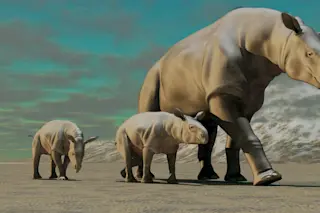Scientists are aware of about 1.5 million animal species, but it’s believed that there are almost nine million total — leaving many yet to be discovered. Some are incredibly small, like the bumblebee bat, which is a little over an inch long and weighs less than a penny.
Others are enormous, such as the colossal squid, which weigh over 1,000 pounds and reach lengths of over 45 feet. But, millions of years ago, gigantic animals were much more common than they are today. Let’s take a look at some of the biggest.
(Credit: Kelly vanDellen/Shutterstock)
Kelly vanDellen/Shutterstock
This ancient alligator ancestor was a monster of a reptile, reaching 35 feet long and up to and weighing between 5,000 and 11,000 pounds. As the largest North American predator at the time, they lived during the Cretaceous Period, more than 75 million years ago.
Research shows that they preyed on dinosaurs, which ...















